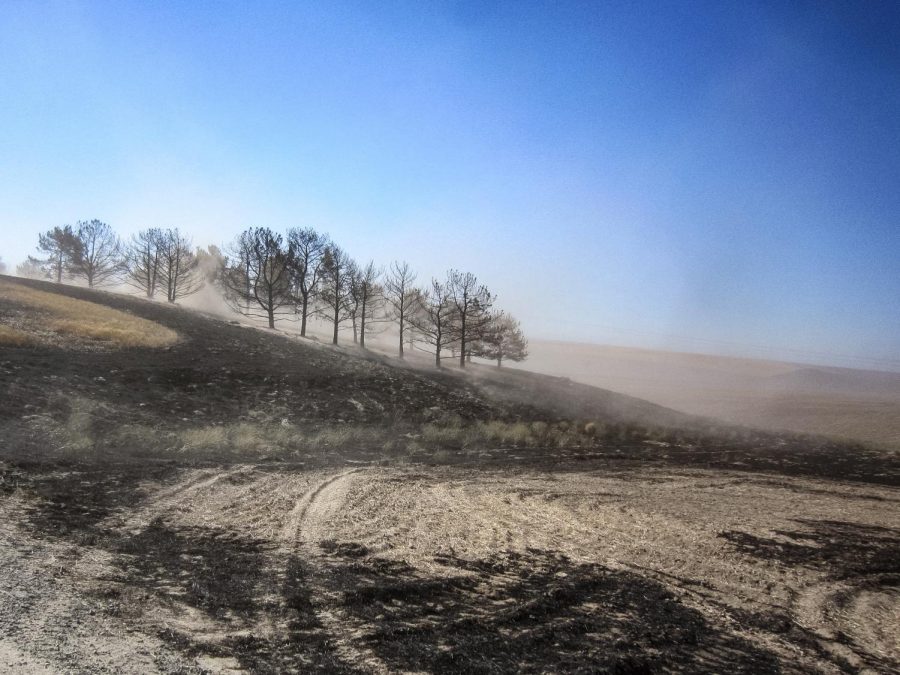Lind Dryland and the death of 85 Austrian trees
Summer wildfire destroyed research station’s only surviving trees, ruining years of studies
COURTESY OF WILLIAM SCHILLINGER
Researchers were studying how drought conditions affect the trees to determine which variety would best serve as winbreak tress for farmsteads.
September 16, 2021
WSU’s Lind Dryland Research Station housed 85 Austrian pine trees for 45 years before they were all destroyed in a fire this summer, leaving decades of ongoing research incomplete.
In 1976, 329 unique varieties of Austrian pines were planted at the station by now-retired WSU forestry specialist Dave Baumgartner. At the time, the trees were 3-year-old seedlings and only about a foot tall.
The trees were used to see which varieties could tolerate drought conditions better, said William Schillinger, research station director and WSU Department of Crop and Soil Sciences professor. At the end of the research, those varieties would be identified as the best ones to use as windbreak trees for farmsteads throughout the inland Pacific Northwest.
The trees came from places all over the world, including Austria, Greece, the former USSR and the Czech Republic. Since their original planting, all but 85 of the trees died due to drought conditions, Schillinger said.
“We still had one or two of those trees dying each year,” he said. “Sometimes, when we had many back-to-back drought years, we had several die, which is okay. We needed to learn that.”
The station is located in Lind, Washington, which has very low levels of precipitation. Schillinger said they receive an average of 9.6 inches a year.
The trees never received one drop of irrigation water, he said. They were pure dryland Austrian pines.
“Eighty-five of the remaining 329 [trees] were doing fine the morning of that fire,” Schillinger said, “and now they’re dead. They got scorched.”
The day of the fire, June 27, was very hot, like it had been all summer. At 11 a.m., it had already reached 105 degrees. By then, the fire reached the station. Dry conditions and steady winds carried the fire quickly through the station.
Along with the destruction of the pines, a total of 177 acres of unharvested standing wheat were lost to the fire, Schillinger said. An additional 175 acres of fallow ground were also burned.
“It is a big loss. We’re just very disappointed and sad … at the loss of this resource,” Schillinger said.
There are a number of landowners who suffered damage from the fire but the station suffered the most damage by far, he said.
“These trees had scientific value,” he said, “but most importantly they had a tremendous value to society.”
Schillinger said there was a massive community response to the fire on that miserably hot Sunday morning.
“I can’t say enough about the response of these rural fire departments. They came from all over,” Schillinger said. “The regional farmers showed up with water trucks and their tractors hooked up to disk ploughs so they could plow firebreaks.”
The station is still recovering from its loss. Schillinger said they are focusing on basic remediation options for the other lost resources.
The station is beginning the expensive process of bringing in straw to put down on the burn, which will return organic matter and carbon back to the soil. This also reduces the risk of water erosion and soil degradation in the winter.
The loss of the Austrian pines can never be replaced, leaving the future of the research unknown.
“Are we going to replant the Austrian pines?” Schillinger said. ”Well, no one’s talked about that right now.”










